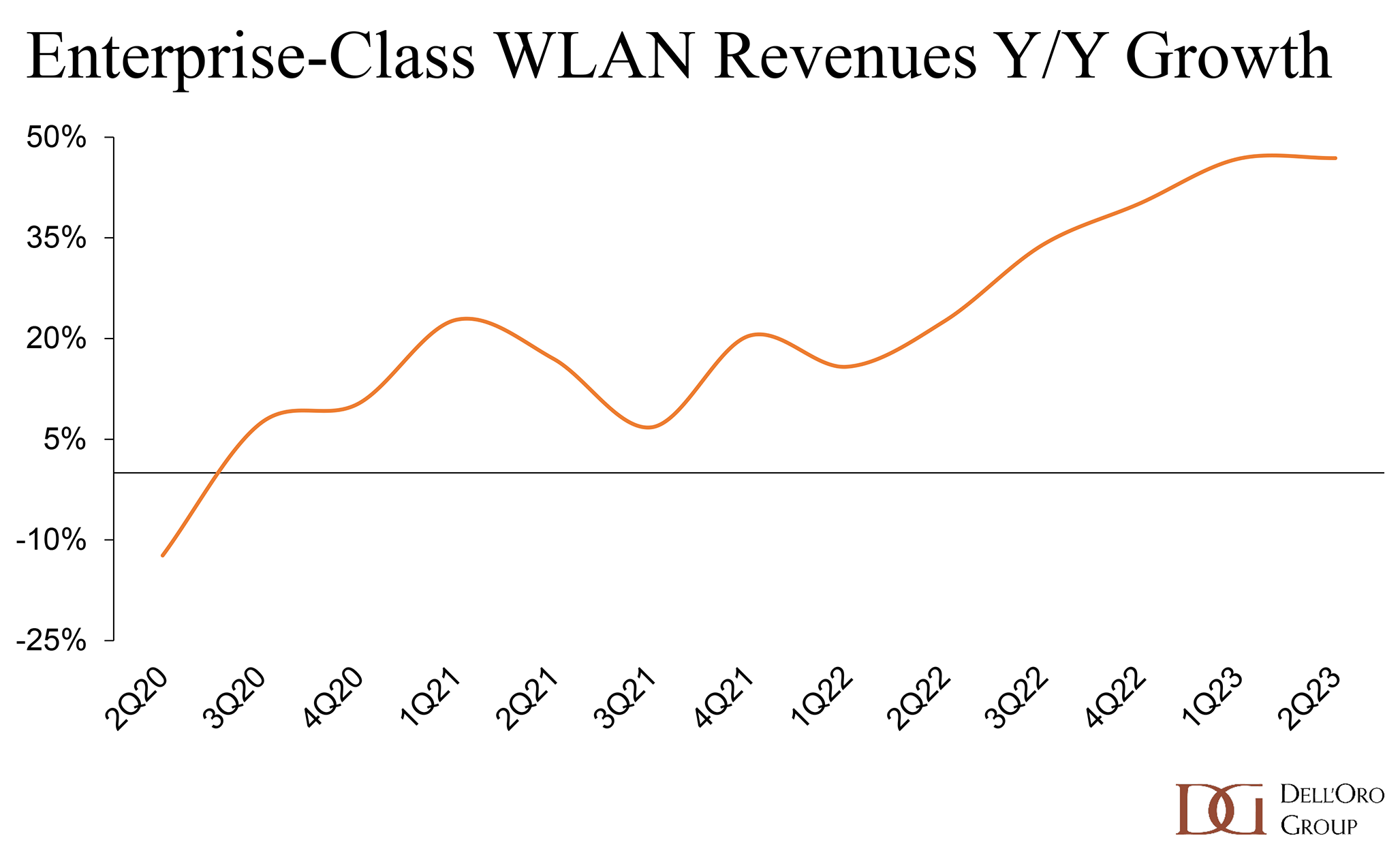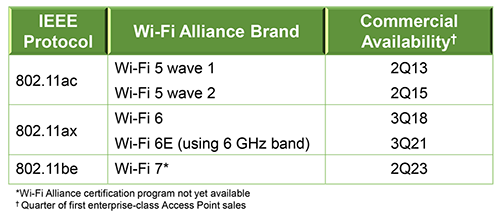Trends in Enterprise-class Wireless LAN
Explosive Growth and Real Innovation
By: Sian Morgan

Sales of Wireless LAN (WLAN) equipment to enterprises have exploded (See Figure 1, below). Since the pandemic, amidst difficult supply conditions, manufacturers’ enterprise-class WLAN revenues grew to dizzying heights in the first half of 2023. The industry has not experienced this level of expansion in over fifteen years.

Source: Dell'Oro Group 2Q23 WLAN Quarterly Report
Many different types of businesses are benefiting from new Wi-Fi use cases, but the following four trends cut across all enterprise verticals and may benefit any organization looking to refresh its LAN.
1. 6 GHz is the new fast lane – if you’re lucky.
For over two decades, the IEEE has worked to evolve WLAN specifications, releasing new versions of the 802.11 standard every three to five years. The most recent standards are shown in the (see table below). In May 2020, the FCC approved the 6 GHz frequency band for unlicensed use, and Wi-Fi users in the U.S. began salivating at the thought of bypassing congestion in the 2.5 and 5 GHz bands. Approval of the full 6 GHz band increased the available spectrum by nearly five times.
The Wi-Fi Alliance reports that more than 70 countries have approved or are considering allocating at least a portion of the 6 GHz for Wi-Fi. Europe has approved half the band for unlicensed use
while other countries, such as China and India, are not allowing Wi-Fi traffic to access any of the band. More clarity around the worldwide acceptance of Wi-Fi’s use of the 6 GHz frequency
band should come at the end of the year, at the World Radiocommunication Conference in Dubai.

Source: Dell’Oro Group
Access Points (AP) supporting Wi-Fi 6E, and by definition the new 6 GHz spectrum, appeared on the market just as the supply chain ground to a near halt, and Wi-Fi 6E AP production was slowed by the additional components required to manufacture the technology. While many of the high-end smartphones and laptops adopted the 6E standard, the iPhone was a notable holdout, and there was weaker 6E support in mid-to-low-range devices. (In September, Apple announced support on the iPhone 15 Pro, but not the iPhone 15). These complications led to a slower adoption of Wi-Fi 6E APs.



















